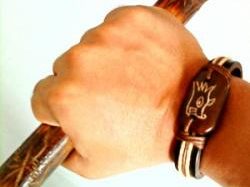The presumption that the Filipino martial arts (FMA) are all about weapons is both a fallacy and reality. Fallacy because there is much in the FMA than stick and knife training. It is also reality because fighting with weapons is the soul and unifying factor of all the FMA.
The emphasis on fighting and defending against weapons, which is the distinguishing and unifying factor of the FMA, can be traced back to the war-like character of the early Filipinos. The late FMA scholar Pedro Reyes stated that arnis is military rather than civilian in origin.
Citing the works of renowned historian William Henry Scott as one of his sources, he wrote, “The pre-Hispanic Filipinos lived in small, military, and war-like or piratical barangays, which could be as large as a hundred houses but could be as few as less than thirty. (Rapid Journal Vol.7 No.2).”
Another interesting quote from Reyes reads, “Another clue to the military character of arnis is that arnisadores train with weapons before they train with bare hands. Why? No soldiers go to war with empty hands. He fights with weapons first, and uses his bare hands only as a last resort. (Rapid Journal Vo.4 No.1).”
This military character is what distinguishes the majority of FMA systems from other popular Asian fighting arts, many of which evolved from being a genuine martial art into a mere combat sport.
With the war-like culture of early Filipinos comes the need to transmit fighting skills quickly. Again, from the article “Influence of Filipino Culture on Arnis,” Reyes wrote,” I hypothesize that every able-bodied man had to learn arnis as a military art. To have killed a man in battle was prestigious.”
I believe the answer to this need was the development of the numbering system or the basic angles of attacks of the FMA weapons systems. The numbering system by and far is still the simplest and fastest way to teach the techniques and concepts of the FMA.
While most styles commonly teach 12 or more angles of attacks, some masters believe that it can be trimmed down to five angles as in the case of the Cinco Teros (Five Cardinal Strikes) style. Commenting on the subject, the late Grandmaster Leo Giron once attested, “The cinco tero is sufficient in real combat.”
The development of various empty hand systems of the FMA was without a doubt influenced by older weapons systems.
Many escrimadores practice a form of boxing whose foundation was also based on weapons skills. An article entitled “Did the Filipino Martial Arts Revolutionized Boxing?” by Lilia Inosanto Howe, published in the now defunct Inside Karate Magazine, featured Lucky Lucaylucay, an escrima master and a former boxing champion in Kauai, Hawaii.
Lucaylucay described to Howe how Western boxing and the FMA crossed path in Hawaii during the 1920s, “The English style of boxing would almost always lose to the Filipino style. It was just vastly more sophisticated.
Filipino arts start training with weapons because it’s more likely you’d be attacked with weapons. The empty-hand motions come from weapons moves. In the case of boxing, the hand moves come from the moves of the dagger.”
Yaw Yan (Sayaw ng Kamatayan or Dance of Death), founded by Grandmaster Napoleon Fernandez during the early 1970s is arguably the most aggressive and flamboyant FMA system to come out of the Philippines in recent years.
While known for its unique powerful kicks, Yaw Yan also boasts of a formidable hand technique arsenal based on the movements of arnis. Expert Yaw Yan fighters toughen their forearms into “clubs of hardened flesh” so they could use it for hitting their opponents in the absence of a regular arnis stick.
Even the techniques of grappling arts of the Philippines, in one way or another were influenced by weapons concepts. Certain moves of bultong, a form of wrestling practiced by the Ifugaos of northern Philippines, was said to be designed to check if an opponent is concealing a weapon like a small dagger. A bultong match is usually held to settle disputes such as adultery and land boundary discords.
Equally, the Filipino philosophical-spiritual concept of “Bahala na,” (originally “Bathala na” meaning “Let God”), in all probability may be born out of fighting with and against weapons. The concept of “Bahala na” applied to combat, implies that the outcome of a fight has already been decided by a higher being. With this kind of mental conditioning, a fighter goes out in a fight free from psychic brakes and with the intention of going all out.
The concept of “Bahala na” is particularly important when fighting with and against weapons. One may suffer a bloody nose, a broken teeth or even a fractured bone in a barehanded fight but with combat with impact or bladed weapons, someone is bound to die. The concept of “Bahala na” helps the Filipino warrior to deal with the possibility of his eventual demise.
The character of the FMA will always be diverse. It is best to establish this fact then recognize that there is one soul, a unifying factor in all the FMA. Only then can its practitioners achieve unity and yet continue to thrive in diversity.






















Leave A Comment
You must be logged in to post a comment.